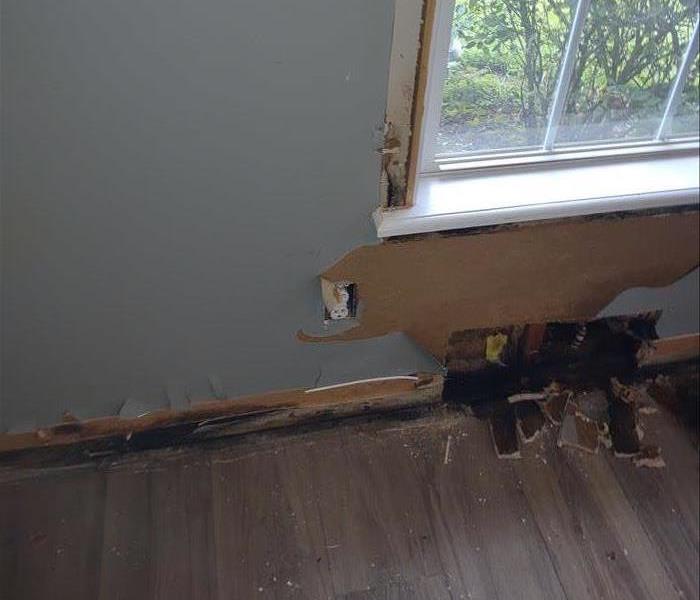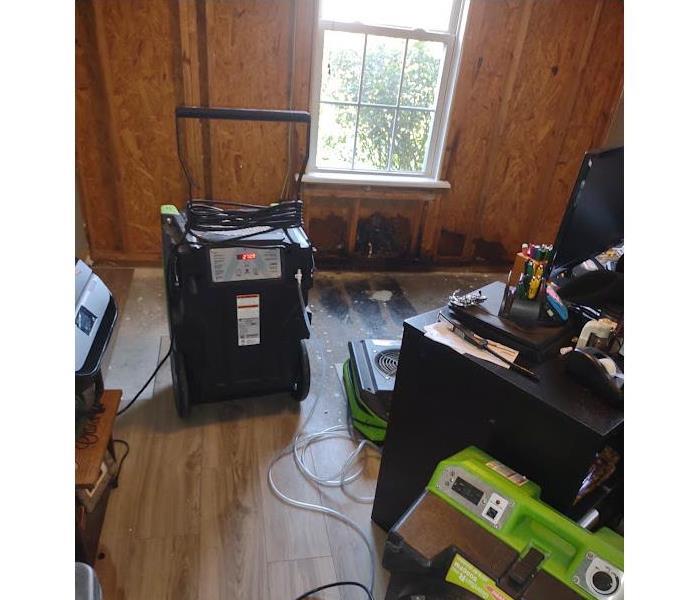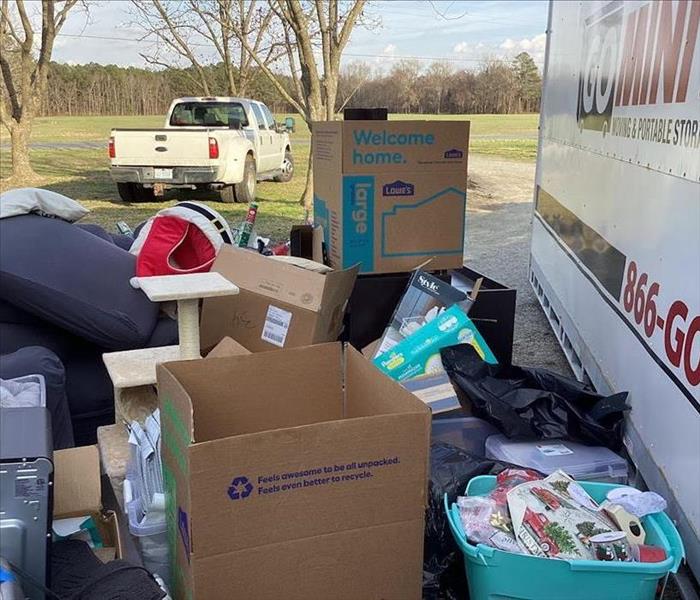
Step 4: Drying and Dehumidification
Our Water Damage Restoration Process
Damaged Material Removal
If any materials cannot be successfully restored, this will be communicated to you. These materials are typically removed as soon as possible to expedite the drying of all restorable materials.
Contents Restoration
SERVPRO specializes in restoring contents damaged by fire, water, or mold. Our expertise and “restore” versus “replace” mentality can help you save money while preserving precious keepsakes, including photos and other personal items that can’t be replaced.
- Dry Cleaning
- Wet Cleaning
- Spray and Wipe
- Foam Cleaning
- Abrasive Cleaning
- Immersion Cleaning
Disposal
We'll remove and dispose of damaged materials with guidance from you and your insurance adjuster.
- Properly Dispose of Refuse
Drying / Dehumidification
Our Professionals will use room measurements, temperature, and relative humidity to determine the optimal number of air movers and dehumidifiers to dry your home or business. We’ll carefully monitor the progress using moisture meters until the materials return to acceptable drying goals.
- Use Dehumidification Equipment
- Use Monitoring Equipment to Track Progress
Monitor Floor and Walls
We check the moisture levels to monitor the drying process.
- Monitor Floors
- Monitor Walls
Drying Equipment
- Industrial-grade dehumidifiers help prevent secondary water damage like swelling and warping of floors, walls, and furniture.
- High-speed air movers create airflow across walls, carpets, pads, and furniture, which accelerates the evaporation of moisture.





 24/7 Emergency Service
24/7 Emergency Service





